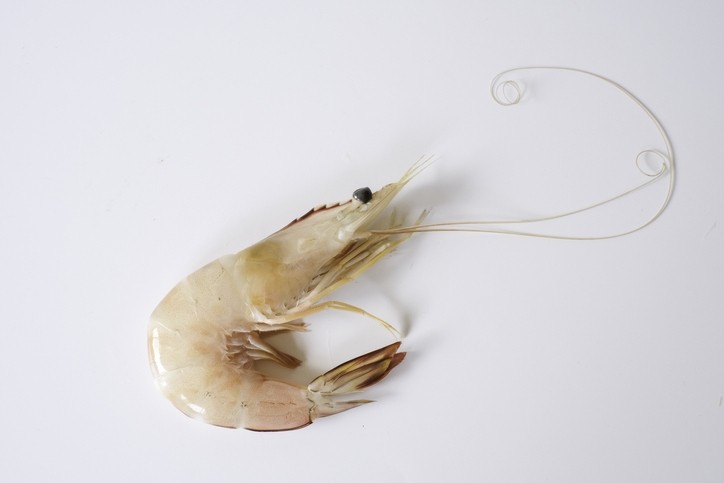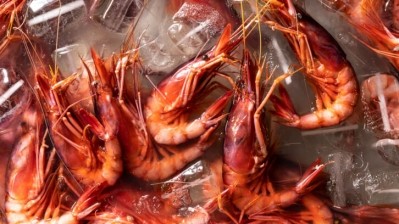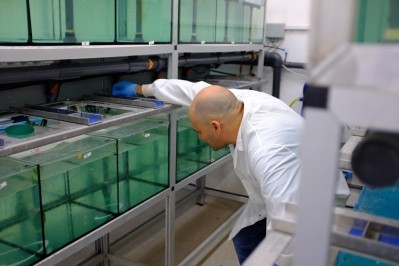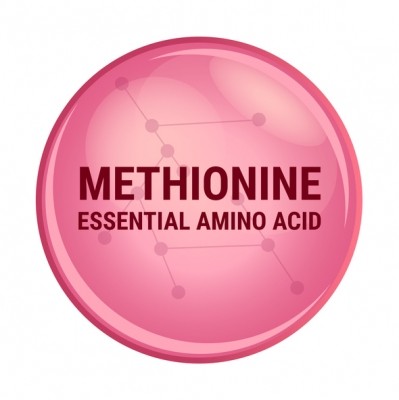Study: Beta-glucan supplementation coupled with high vitamin C and E levels can boost antioxidant capacity of shrimp

The paper, published in animals, documents research looking at the potential beneficial effects of adding vitamins C and E, beta-glucans, taurine, and methionine to microdiets for whiteleg shrimp (Penaeus vannamei) post larvae.
There is evidence that dietary additives can stimulate the shrimp immune system, but few studies have focused on the initial developmental stages, said the Spanish and Portuguese researchers.
The challenge
The whiteleg shrimp is currently the most representative animal species in aquaculture, accounting for a 4.7% share of global production in 2020, according to the paper.
To meet the market demands, whiteleg shrimp larvae and post-larvae (PL) yields in hatcheries has increased intensively. However, problems in larviculture can have an enormous impact on shrimp performance in the long-term, affecting the downstream production of high-quality juveniles and adults, noted the authors.
Initial developmental stages are frequently associated with sub-optimal growth, high size dispersion, and low survival due to cannibalism and reduced disease resistance to opportunistic pathogens.
Shrimp, of course, lack an adaptive immune response and depend uniquely on their innate immune system to maintain a good health status and avoid pathogenic outbreaks. They cannot be vaccinated due to the lack of an adaptive immune system, and the use of antibiotics in the aquaculture industry is limited due to inherent food safety concerns, environmental issues, and the increased antimicrobial resistance.
Consequently, the use of functional dietary additives to stimulate the shrimp immune system has been studied as a prophylactic alternative and is regarded as a key strategy to overcome the constraints of intensive shrimp farming, said the research team.
“Organic acids, plant/algae extracts, nucleotides, functional amino acids, vitamins, and naturally occurring immunostimulant compounds such as beta-glucans have been studied thoroughly in diets for fish and crustaceans, as they may improve growth performance, survival, stress, and disease resistance. Their potential to be included in diets for juvenile and/or adult while leg shrimp has also been demonstrated to some extent by several authors. Nevertheless, far fewer studies are available on the use of these supplements in diets for the initial developmental stages of whiteleg shrimp.”
The authors cited evidence that vitamin C supplemented in post-larval diets can be an effective antioxidant at the tissue level. “More recently, increases in growth performance, digestive enzyme activity, and improvement of immune condition were verified when incorporating commercial prebiotic and probiotic blends in such diets.”
Hence, they see that nutritional products designed to enhance development and resistance to stress and pathogenic factors during such critical production stages might have tremendous potential to reinforce the success of shrimp farming. Their study aimed therefore to evaluate the effects of several health promoting nutrients/additives in this respect.
The study
Four experimental microdiets were assessed: a positive control diet (PC); the PC with decreased levels of vitamin C and E as negative control (NC); the PC with increased taurine and methionine levels (T + M); and the PC supplemented with beta-glucans (BG).
The research team said though there were no improvements in growth performances and survival observed at the end of the experimental period, all dietary additives evaluated have the potential to add value to inert microdiets for whiteleg shrimp PL.
Amongst the additives tested, the inclusion of beta-glucans in the diets seems to be the most promising, they said. Such supplementation reduced lipid peroxidation in the shrimp PL even when compared to a high-quality control diet.
When compared to the NC, the interaction between the addition of beta-glucans and higher levels of vitamins C and E also seems beneficial in relation to the antioxidant capacity of whiteleg shrimp PL, said the authors.
“Increasing the vitamin C and E supplementation levels in the PC dietary treatment did not produce any changes in growth performance and survival when compared with the NC, suggesting that the levels of these vitamins present in the NC diet still allowed the shrimp post larvae to maintain an adequate development. Like other vitamins, vitamin C and E are essential nutrients, as animals are unable to synthesize sufficient amounts to meet their physiological needs, and a deficient supply in the diet often results in poor growth, possibly leading to severe health issues and even compromising survival,” said the scientists.
They saw no changes in the activity levels among most of the immune and antioxidant parameters measured when increasing the levels of these vitamins in the diets.
“These findings indicate that higher supplementation levels of vitamins C and E in microdiets for whiteleg shrimp PL did not directly enhance growth and survival in the current study but may have improved their robustness. Although not confirmed in the current experiment, this may be an indication that shrimp may have a higher survival capacity in the long term and particularly in a potentially challenging husbandry situation. Therefore, inert diets with adequate levels of vitamins C and E can be vital during critical stages of production, particularly in farms where a nursery system is employed (intermediate step between the early PL stage and the grow out phase), in which PL are kept at extremely high stocking densities that can induce stress and vulnerability to opportunistic pathogens.”
The whiteleg shrimp PL fed with the T + M diet showed similar growth performances, survival, oxidative status, and immune condition to those fed the PC dietary treatment, indicating that the ingredient formulation of the control diet was capable of covering the shrimp PL requirements for taurine and methionine, and no extra benefits were obtained through the supplementation of these amino acids.
“These results can probably be explained by the fact that the PC was a high-quality diet with considerable levels of protein of marine origin.”
The inclusion of beta-glucans in the diets did not significantly affect the shrimp PL growth performance and survival.
“Still, shrimp PL fed the BG diet tended to grow less and achieved final weights around 15% lower than those fed the PC, although it was not supported by the statistical analysis. Nonetheless, lipid peroxidation levels dropped significantly in shrimp PL fed the BG dietary treatment compared to those fed the PC diet, suggesting that beta-glucans improved the antioxidant mechanisms of the animals. In fact, the immunostimulatory and antioxidant-boosting properties of beta-glucans as aquafeed additives have been reported for several species, as recently reviewed by Pogue et al.”
Source: Animals 2023
Title: Health-Promoting Additives Supplemented in Inert Microdiets for Whiteleg Shrimp (Penaeus vannamei) Post-Larvae: Effects on Growth, Survival, and Health Status
Authors: A Barreto, D Peixoto, C Fajardo, W Pinto, R J M Rocha, L E C Conceição, B Costas


















